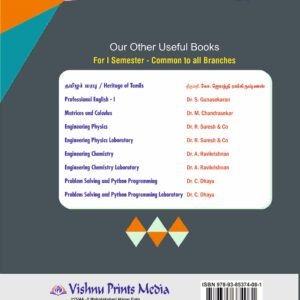BE3254 – ELECTRICAL AND INSTRUMENTATION ENGINEERING
UNIT I: TRANSFORMER 9
Introduction – Ideal and Practical Transformer – Phasor diagram – Per Unit System –
Equivalent circuit – Testing – Efficiency and Voltage Regulation – Three Phase Transformers
– Applications – Auto Transformers, Advantages – Harmonics.
UNIT II: DC MACHINES 9
Introduction – Constructional Features – Motor and Generator mode – EMF and Torque
equation – Circuit Model – Methods of Excitation – Characteristics – Starting and Speed
Control – Universal Motor – Stepper Motors – Brushless DC Motors – Applications
UNIT III: AC ROTATING MACHINES 9
Principle of operation of three – phase induction motors – Construction – Types – Equivalent
circuit, Speed Control – Single phase Induction motors – Construction – Types – starting
methods. Alternator: Working principle – Equation of induced EMF – Voltage regulation,
Synchronous motors – working principle – starting methods – Torque equation.
UNIT IV: MEASUREMENTS AND INSTRUMENTATION 9
Functional elements of an instrument, Standards and calibration, Operating Principle, types –
Moving Coil and Moving Iron meters, Measurement of three phase power, Energy Meter,
Instrument Transformers – CT and PT, DSO – Block diagram – Data acquisition.
UNIT V: BASICS OF POWER SYSTEMS 9
Power system structure – Generation, Transmission and distribution, Various voltage levels,
Earthing – methods of earthing, protective devices – switch fuse unit – Miniature circuit breaker
– moulded case circuit breaker – earth leakage circuit breaker, safety precautions and First
Aid











Reviews
There are no reviews yet.